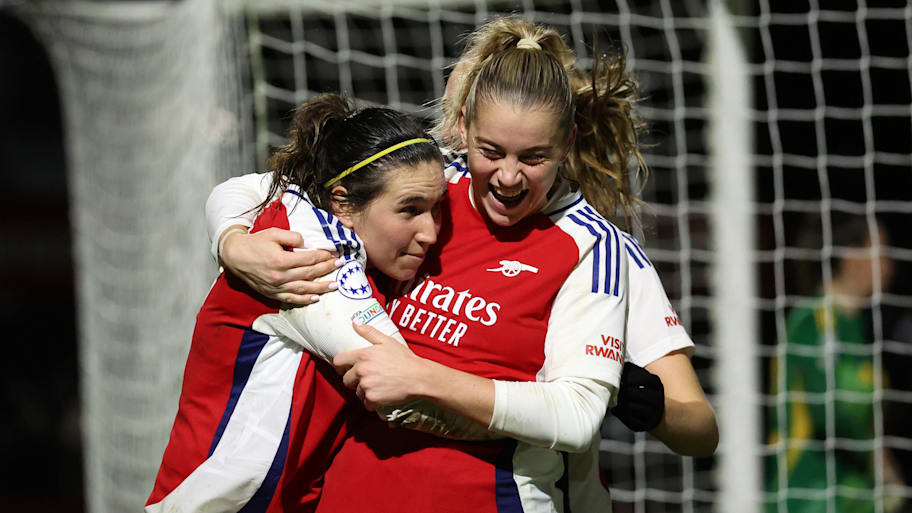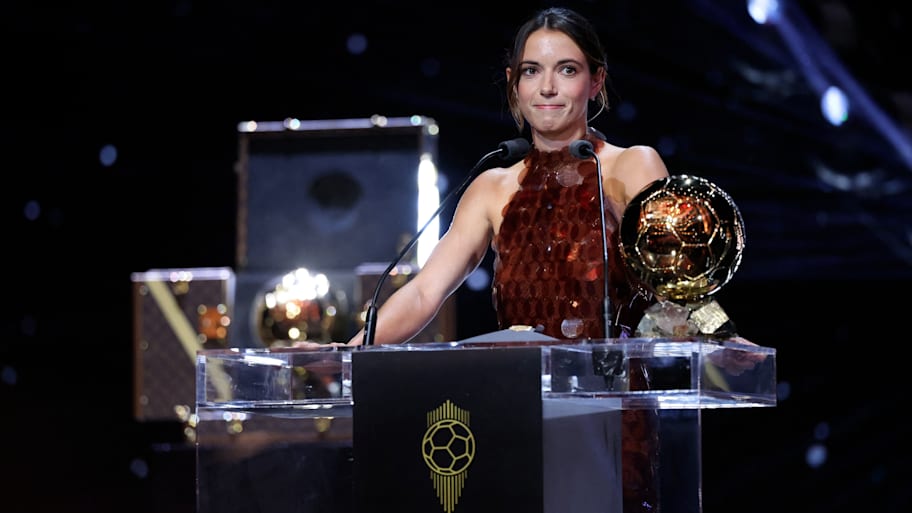The biggest star in women’s soccer is growing ever brighter.
On Monday night, in Paris, France, FC Barcelona and Spain midfielder Aitana Bonmatí lifted the 2025 Ballon d’Or Féminin. It was the 27-year-old’s third consecutive time being voted the best women’s soccer player of the year, as she became the first women’s player to win the award three times since the women’s prize was founded in 2018.
But why did Bonmatí win the 2025 Ballon d’Or?
Aitana! 🤩#ballondor pic.twitter.com/d1X05GrlIu
— Ballon d'Or (@ballondor) September 22, 2025
First, let’s understand how the voting works. The initial list of 30 nominees is compiled by France Football, in collaboration with a select group of retired players and its sister publication, L'Équipe. This list is based on the players performances between Aug.10, 2024, and Aug. 2, 2025.
Then, one elected journalist from the top 50 FIFA-ranked women’s nations in the world casts a ballot of who they believe are the top 10 best-performing players in the world from the 30-player nominees list.
These 50 journalists’ 10-player ballots are scored in descending order. The top player scores 15 points, then 12, 10, 8, 7, 5, 4, 3, 2, and finally 1 point. These ballots are advised to rank the players on individual performances, character, team performances and achievements, in addition to class and fair play.
Thus, the player who wins the Ballon d’Or is whoever has the most overall points from the ballot.
Many have noticed that this voting system creates a European bias. After all, 28 of the top 50 FIFA-ranked women’s nations are in Europe. Furthermore, the Ballon d’Or performance window is judged using the European fall-spring soccer calendar.
This schedule puts players outside of Europe, like NWSL MVP Temwa Chawinga, for example, at a disadvantage because they don’t play on the same soccer calendar. Meanwhile, over half of the journalists voting will be in different time zones, potentially without a broadcast deal to view their games.
Looking at the final rankings of the 30 players for the women’s Ballon d’Or, there were no players from outside Europe in the top 10, and there were only four non-European or non-European-based players in the top 30 (Marta, 12; Barbra Banda, 14; Chawinga, 17; and Amanda Gutierres, 21).
Now, when we apply this voting formula to Bonmatí, it becomes clear why one of the most successful European players based at one of the continent’s biggest clubs would win. Bonmatí plays for Barcelona and Spain, who reached the UEFA Women’s Champions League 2024–25 final, the UEFA Nations League 2025 final and the Women’s Euro 2025 final. Barcelona also won the Spanish league, Liga F, and cup double.
Some people might be wondering how a player for Spain and Barcelona won the Ballon d’Or over a player who played for Arsenal and England, who won the UEFA Women’s Champions League and the Women’s Euro, respectively.
Well, Arsenal’s Mariona Caldentey, who plays for Spain, and England’s Alessia Russo did come in second and third, respectively. But given Arsenal’s second-place finish in the English Women’s Super League, there is reason to balance out some of the team performance points that Caldentey and Russo may have garnered.

Bonmatí’s Ballon d’Or win is evidence that losing a final, as Barcelona and Spain did, does not define an individual season. Even if Bonmatí had poor matches in those narrow defeats in the UEFA Women’s Champions League and the Women’s Euro, where she missed her penalty kick in the shootout against England, the voting public still believed the majority of her performances were worthy.
What perhaps gives Bonmatí an even greater voting share is her preexisting star appeal and name recognition. Having won the Ballon d’Or twice already, there is no doubting her class and quality, and perhaps many of the voters would feel comfortable putting her in their top 10s compared to a less renowned player, like Caldentey or Russo.
It’s also clear that individual statistical metrics will only get you so far. Barcelona and Poland forward Ewa Pajor, who finished eighth in the Ballon d’Or voting, scored more goals than any other player. Bonmatí did have more combined goals and assists than Caldentey and Russo, but not Pajor or her other Barcelona and Spain teammate, Alexia Putellas.
Another way voters could have been swayed is through big moments. Evidence of this can be seen in Arsenal and England’s Chloe Kelly, who finished fifth, but did not start a single game at the Women’s Euros and only started 12 of 26 matches for Arsenal. However, Kelly’s ability to change the outcome of games in major moments clearly had appeal.
Bonmatí also has these big moments on her résumé. In one of Spain’s toughest Women’s Euro 2025 matches, the semifinal against Germany that was locked at 0–0, it was Bonmatí who scored the winner with one of the most audacious and technically perfect finishes of the year. With her body language faking a cross, she squeezed a missile-like shot into a slither of space at the near post.
Aitana's turn for the goal 🥵 #WEURO2025 pic.twitter.com/WbwTRCbyfJ
— UEFA Women's EURO 2025 (@WEURO2025) July 23, 2025
Of course, the counterargument is that Caldentey and Russo both scored in the Women’s Euro final, albeit neither goal had quite the same gravitas and aura.
It’s clear that while Bonmatí had a brilliant season, where she was exceptional but below her best compared to the past two seasons, there was no runaway competitor to steal the crown.
And so, perhaps that is why Bonmatí was crowned the best player in the world for a third consecutive time: aura. The ineffable feeling of greatness that Bonmatí emits was perhaps the tiebreaker in what was likely a very close ballot.
More Soccer on Sports Illustrated
This article was originally published on www.si.com as What Aitana Bonmatí’s Record Triumph Reveals About Ballon d’Or Voting.
